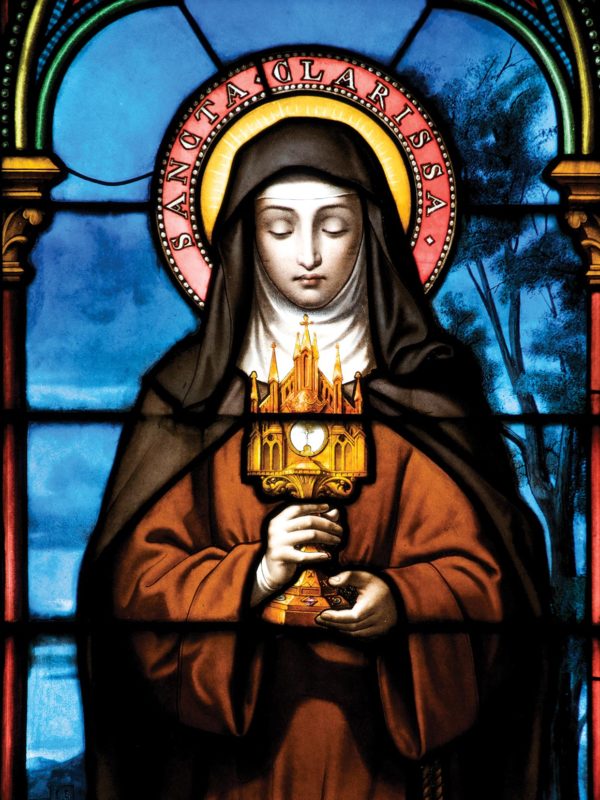The Order of St. Clare, often known as the Poor Clares, today numbers some 20,000 nuns around the world. But how did this 13th-century nun become the patron saint of television?

Italia! Women #3: St. Clare of Assisi (1194-1253)
Chiara Offreduccio (she didn’t become “St. Clare” until two years after her death) was born to a noble family in Assisi during the time of St. Francis (who also wasn’t canonised until two years after his death).
Her mother, Ortolana, was devout and taught the Catholic faith to Clare and her younger sisters, Caterina and Beatrix.
But Ortolana wasn’t so devout as to not support her husband’s plans for their eldest to be married into another wealthy family. Clare, however, had other plans.
She had already become enthralled by the teachings of Francis, who preached that poverty was the path to God, and went to him to have her hair shorn and her rich cloak traded for a penitential habit of coarse cloth.
When her father came to the church of Santa Maria degli Angeli to bring her back home, she refused, clinging to the altar, professing her love for Christ (“who shall be my only husband”), and, finally, removing the hood of her cloak to reveal to her father her new haircut.
As any parent will know, teenagers often grow out of their rebellious phase. But Clare did not.
Under Francis’s direction, and then without it, she spent the rest of her life at the convent of the Church of San Damiano, where she was joined within weeks by her sister Caterina (whose name was changed to Agnes by Francis, because she was gentle, like a lamb, and who is now St. Agnes) and later also by her mother, the “Blessed” Ortolana.
There, at San Damiano, Clare wrote her Rule of Life, the first set of monastic guidelines known to have been written by a woman, and lived a life so austere that even Francis thought she might have been taking it all a bit far.
She wore no shoes, slept in no bed, ate no meat – only alms, and vegetables from the orto – and spent her days in near silent devotion and service.
She is the patron saint of embroiderers, gold workers, laundry workers and people suffering from eye diseases.
She is also the patron saint of television.
They didn’t have televisions in those days, obviously, but in her later years when she was too poorly to attend Mass, Clare found that she could spiritually see the service on the wall of her room.
So when, in 1958, they needed a patron saint of the old gogglebox, she was clearly the leading candidate.
Discover more Italian Culture in our archive
Featured image © rcyoung via Getty Images
